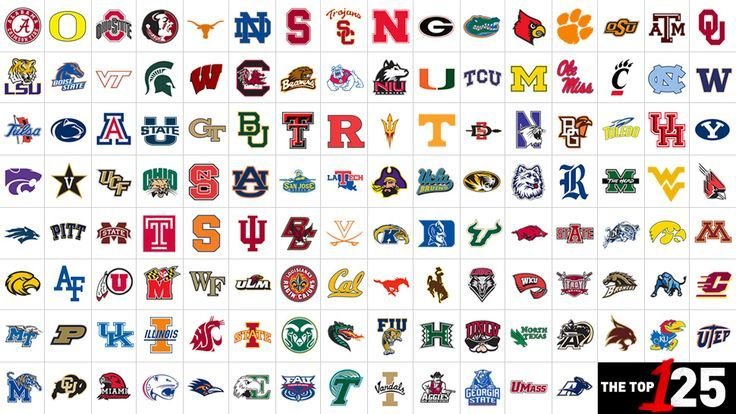Specific Utility Functions; Budget Constraints
Christopher Makler
Stanford University Department of Economics
Econ 50: Lecture 5
Agenda for Today
Part I: Examples of Utility Functions
Part II: Budget Constraints
- Perfect Substitutes
- Cobb-Douglas
- CES
- Quasilinear
- Choice Space vs Feasible Sets
- Constructing a Budget Set
- Changes in the Budget Set
(save kinked constraints for Monday)
Part I: Examples of Utility Functions
How can different functional forms can be used to model different ways people think about the relationships between goods?


Preferences over Soda
Suppose one liter of soda gives you 20 "utils" of utility; so each one-liter bottle (good 1) gives you 20 utils,
and each two-liter bottle (good 2) gives you 40 utils.
Which other bundles give you the same utility as
12 one-liter bottles and 6 two-liter bottles (A)?
Which other bundles give you the same utility as
12 one-liter bottles and 2 two-liter bottle (B)?
12
24
Any combination that has 24 total liters
Any combination that has 16 total liters
16
20
4
8
12
24
16
20
4
8
A
B
pollev.com/chrismakler

Preferences over Soda
Suppose one liter of soda gives you 20 "utils" of utility; so each one-liter bottle (good 1) gives you 20 utils,
and each two-liter bottle (good 2) gives you 40 utils.
Which other bundles give you the same utility as
12 one-liter bottles and 6 two-liter bottles (A)?
Which other bundles give you the same utility as
12 one-liter bottles and 2 two-liter bottle (B)?
Any combination that has 24 total liters
Any combination that has 16 total liters
What utility function represents these preferences?
Perfect Substitutes
Goods that can always be exchanged at a constant rate.
-
Red pencils and blue pencils, if you con't care about color
-
One-dollar bills and five-dollar bills
-
One-liter bottles of soda and two-liter bottles of soda
Cobb-Douglas
An easy mathematical form with interesting properties.
-
Used for two independent goods (neither complements nor substitutes) -- e.g., t-shirts vs hamburgers
-
Also called "constant shares" for reasons we'll see later.
Normalizing Cobb-Douglas Functions
One reason to transform a utility function is to normalize it.
This allows us to describe preferences using fewer parameters.
[ multiply by \({1 \over a + b}\) ]
[ let \(\alpha = {a \over a + b}\) ]
Normalizing Cobb-Douglas Functions
One reason to transform a utility function is to normalize it.
This allows us to describe preferences using fewer parameters.
[ raise to the power of \({1 \over a + b}\) ]
[ let \(\alpha = {a \over a + b}\) ]
Constant Elasticity of Substitution (CES) Utility
COMPLEMENTS: \(r < 0\)
SUBSTITUTES: \(r > 0\)
Quasilinear
Generally used when Good 2 is
"dollars spent on other things."
-
Marginal utility of good 2 is constant
-
If good 2 is "dollars spent on other things," utility from good 1 is often given as if it were in dollars.
Example: draw the indifference curve for \(u(x_1,x_2) = \frac{1}{2}x_1x_2^2\) passing through (4,6).
Step 1: Evaluate \(u(x_1,x_2)\) at the point
Step 2: Set \(u(x_1,x_2)\) equal to that value.
Step 4: Plug in various values of \(x_1\) and plot!
\(u(4,6) = \frac{1}{2}\times 4 \times 6^2 = 72\)
\(\frac{1}{2}x_1x_2^2 = 72\)
\(x_2^2 = \frac{144}{x}\)
\(x_2 = \frac{12}{\sqrt x_1}\)
How to Draw an Indifference Curve through a Point: Method I
Step 3: Solve for \(x_2\).
How would this have been different if the utility function were \(u(x_1,x_2) = \sqrt{x_1} \times x_2\)?
\(u(4,6) =\sqrt{4} \times 6 = 12\)
\(\sqrt{x_1} \times x_2 = 12\)
\(x_2 = \frac{12}{\sqrt x_1}\)
Example: draw the indifference curve for \(u(x_1,x_2) = \frac{1}{2}x_1x_2^2\) passing through (4,6).
Step 1: Derive \(MRS(x_1,x_2)\). Determine its characteristics: is it smoothly decreasing? Constant?
Step 2: Evaluate \(MRS(x_1,x_2)\) at the point.
Step 4: Sketch the right shape of the curve, so that it's tangent to the line at the point.
How to Draw an Indifference Curve through a Point: Method II
Step 3: Draw a line passing through the point with slope \(-MRS(x_1,x_2)\)
How would this have been different if the utility function were \(u(x_1,x_2) = \sqrt{x_1} \times x_2\)?
This is continuously strictly decreasing in \(x_1\) and continuously strictly increasing in \(x_2\),
so the function is smooth and strictly convex and has the "normal" shape.
Summary of Part I
When considering two goods, there are lots of ways you might feel about them — especially how substitutable the goods are for one another, which is captured by the MRS.
Different functional forms have different MRS's; so they're good for modeling different kinds of preferences.
Take the time to understand this material well.
It's foundational for many, many economic models.
Part II: Budget Constraints
Choice space:
all possible options
Feasible set:
all options available to you
Optimal choice:
Your best choice(s) of the ones available to you
Constrained Optimization

Choice Space
(all colleges plus alternatives)
Feasible Set
(colleges you got into)
Your optimal choice!
Preferences
Preferences describe how the agent ranks all options in the choice space.
For example, we'll assume that you could rank all possible colleges
(and other options for what to do after high school) based upon your preferences.
Preference Ranking
Found a startup
Harvard
Stanford
Play Xbox in parents' basement
Cal
Choice space
Feasible set
Optimal
choice!
Found a startup
Stanford
Cal
Harvard
Play XBox in parents' basement
Optimal choice is the highest-ranking option in the feasible set.
One type of feasible set: the budget set
Prices and Expenditure
Suppose each good has a constant price
(so every unit of the good costs the same)
Affordability
Suppose you have a given income \(m\)
to spend on goods 1 and 2.
Then bundle \(X = (x_1,x_2)\) is affordable if
The feasible set, or budget set, is the set of all affordable bundles.
Example: suppose you have \(m = \$24\) to spend on two goods.
Good 1 costs \(p_1 = \$4\) per unit.
Good 2 costs \(p_2 = \$2\) per unit.
Is the bundle (2,4) affordable (in your budget set)? What about the bundle (4,6)?
Draw your budget set.
How would it change if the price of good 2 rose to \(p_2' = \$6\) per unit?
How would it change if your income rose to \(m' = \$32\)?
Budget Line
pollev.com/chrismakler

Holding income and the price of good 2 constant, an increase in the price of good 1 will cause the budget line to become:
steeper
flatter
it depends on thelevel of income
it depends on the price of good 2
Interpreting the Slope of the Budget Line
Example:
Apples cost 50 cents each
Bananas cost 25 cents each
Slope of the budget line represents the opportunity cost of consuming good 1, as dictated by market prices.
In other words: it is the amount of good 2 the market requires you to give up in order to get another unit of good 1.

pollev.com/chrismakler
If apples (good 1) cost $0.80 each,
and bananas (good 2) cost $0.20 each, what is the magnitude (absolute value) of the slope of the budget line?
Composite Goods
You have $100 in your pocket.
You see a cart selling apples (good 1) for $2 per pound.
- Plot your budget line.
- What is "good 2"?
- What does the bundle (10,80) signify?
- What is the slope of the budget line, and what are its units?